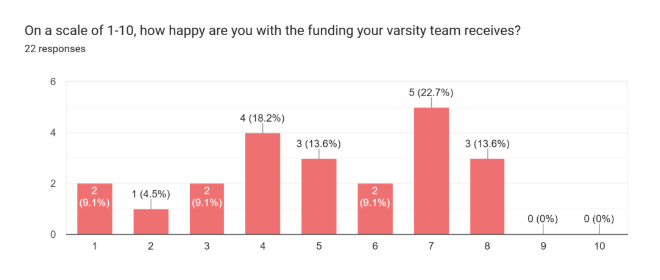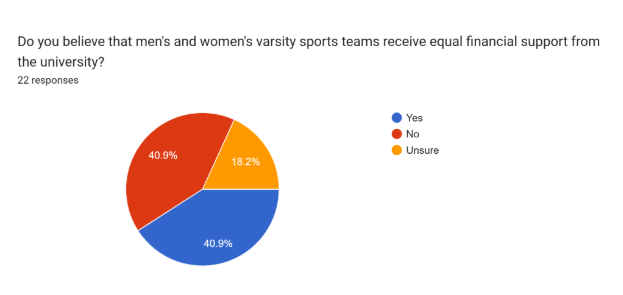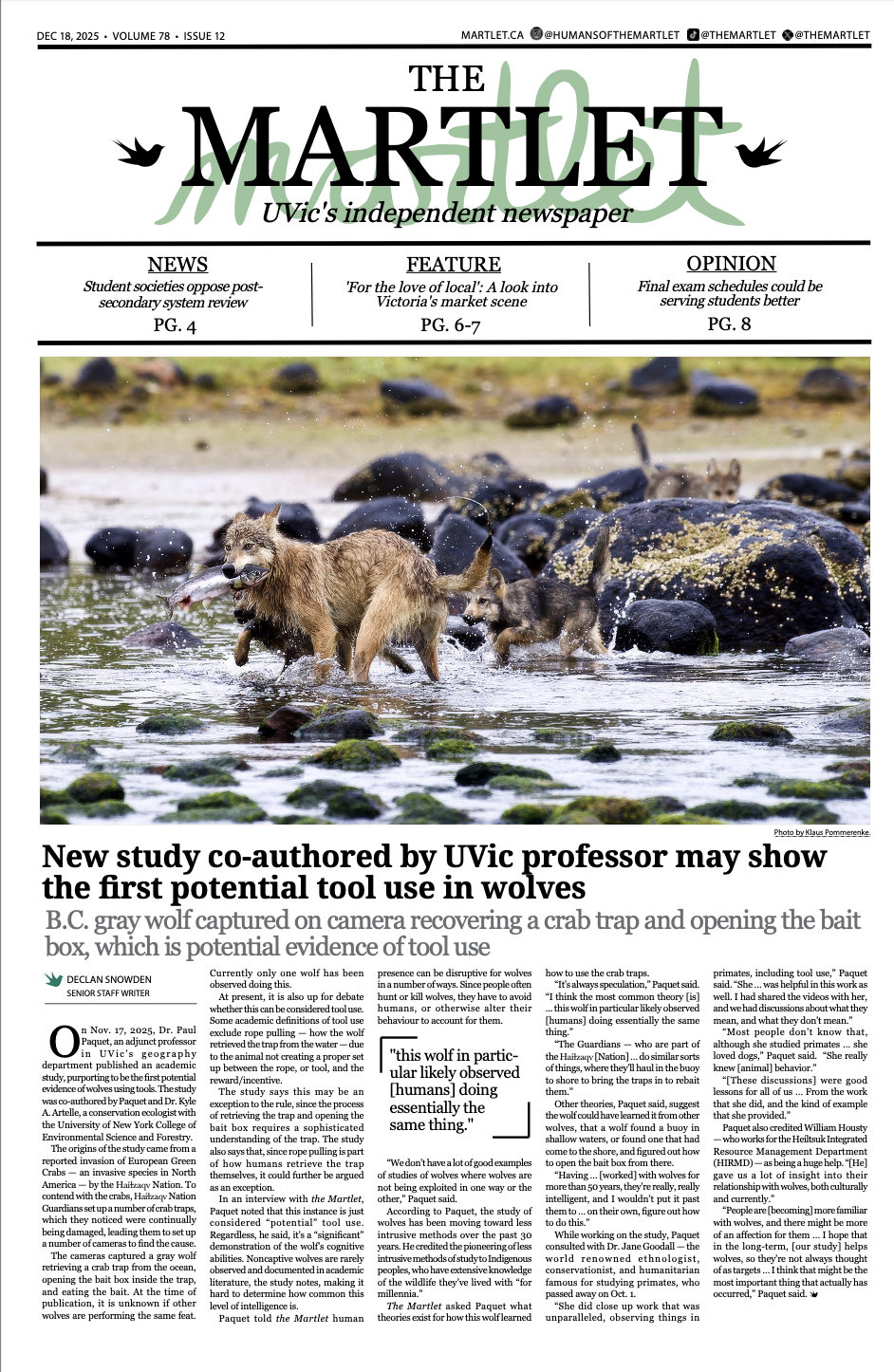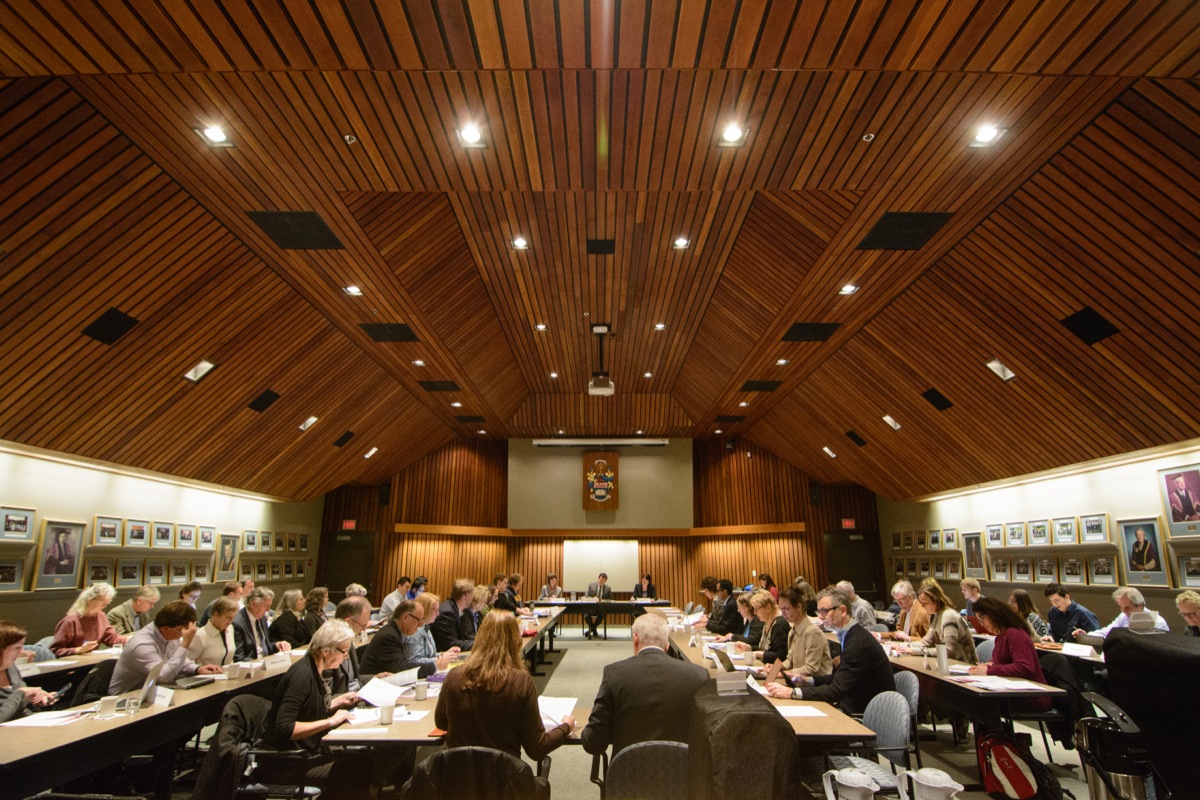‘We are not the curtain raisers’
When UVic Athletics and Recreation was asked to provide the Martlet with annual budgets of the men’s and women’s varsity basketball, rugby, and soccer teams, a spokesperson responded that “at UVic, our varsity team budget is distributed equitably across all 15 teams.”
As anyone who’s ever played a high level sport will tell you, money matters, and money talks.
So, we turned to UVic athletes themselves to give us their opinions on what exactly Vikes varsity budgets are saying.
The Martlet polled 22 varsity athletes across a range of sports and genders on their thoughts about the difference in university spending habits between men’ s and women’ s varsity teams. We granted each player anonymity so they could speak their mind freely.
We first asked players to rank how happy they were with the funding their team receives on a scale of one to ten. The most common answer was five, with nobody scoring the university’s varsity funding above an eight.

Photo from Martlet poll.
Next, we asked athletes whether they believed that the men’s and women’s teams received equal financial support from the university. The answers were basically split down the middle, with nine athletes saying yes, nine saying no, and four saying they weren’t sure.

Photo from Martlet poll.
Lastly, we asked athletes a series of written answer questions regarding funding, promotion, and gender-based inequalities:
Have you noticed any differences in funding for things like travel, equipment, scholarships, or facilities between men’s and women’s teams?
The most common grievance we received for this question was, surprising, per diem funds. A number of athletes alleged that the men’s teams receive more per diem money for away trips, with one player saying that the men’s team receives “almost double the per diem for food.”
However, a spokesperson from UVic said that “regardless of team or gender, all athletes receive the same daily per diem for overnight away trips.”
Comments from players about the availability and size of scholarships were also common, with three players expressing displeasure in the amount of scholarship funds available to men’s teams compared to women’s.
“The men get way more scholarship money,” said one athlete.
“Vikes adhere to all current regulations regarding scholarship distribution mandated by USports,” said Nick Clarke, Director of Varsity Performance Sport. “USports mandate[s] institutions to distribute a minimum of 45% total financial awards to female student-athletes and a minimum of 45% to student-athletes on men’s teams.”
Clarke did not share the exact makeup of UVic’s scholarship spending. It is also unclear whether additional revenue, attained through funding and alumni donations, can go towards scholarships.
Do you think men’s and women’s varsity teams receive equal attention and promotion from the university (eg. social media, marketing, game-day experience)?
The consistent tendency of the university to place women’s games before the men’s was at the centrepiece of this discussion. Seven separate athletes raised concerns about the way that games are scheduled, many of them targeting Thunderfest specifically as an example of that disparity.
“The men’s soccer team every year gets the better time slot for Thunderfest games, with parachuters/fireworks for the beginning of their game with a much bigger crowd,” said one varsity player. “Women start with much less fanfare and a smaller crowd before the ‘real’ event of the men’s game.”
“It’s as if we are curtain raisers,” echoed another.
Athletes equally had issues with the way their teams are advertised on social media.
“I don’t think varsity is doing enough to promote the women’s teams compared to the men’s team,” said the athlete. “[They] need to put more effort into growing the women’s programs.”
Have you ever personally experienced or witnessed gender-based inequities in varsity sports at our university or any other university?
Of the 22 athletes polled, only four of them (two women’s rugby players, a women’s basketball player, and a women’s soccer player) opted to answer this question. All four athletes specifically mentioned fitness testing and the availability of physios and medical treatment.
“Availability of physios and just things being done easier/better for men,” said one player.
“[They get] better time, or more space and easier access to equipment,” agreed another.
A UVic spokesperson said that physiotherapy and fitness testing opportunities are impartially available to all varsity athletes, though they did not expand on how and why decisions regarding scheduling are made.
It was a third player, though, who offered the most interesting claim.
“[There are] double standards for social media content (ie men’s team posing with shirts off in the locker room, women’s team criticized for wearing bathing suits in beach setting)”, she said. “And fitness testing (men can go shirtless, women must wear a shirt).”
“There is no policy enforcing a difference in attire based on gender,” said Nick Clarke.
These are the subtler ways that inequities manifest — through potentially tacit agreements that regulate women’s appearance and behavior more strictly than men’s. From Serena Williams’ catsuit controversy in the 2018 French Open to the 2021 fines of the Norwegian beach handball team for wearing shorts instead of bikinis and most recently the discussion surrounding the U.S. women’s track team outfits at the 2024 Paris Olympics, this is an ongoing and consistently relevant debate.
The fact that similar concerns are emerging at the varsity level suggests that these biases are not limited to professional sports but are ingrained in athletic culture more broadly.
Other notes: Is there anything that you would like to add?
“We have to fundraise for our assistant coaches salary. It feels like we are constantly fundraising, we have to constantly ask family members and friends for money which starts to feel awkward after a while. There is a ton of pressure to bring in a specific amount of money individually which cannot always be done considering people’s personal networks,” said one athlete.
With regards to fundraising, UVic Athletics and Recreation said that “the athletics and recreation department acknowledges that all our varsity programs, led by our head coaches, student-athletes and alumni, consistently attain additional revenue through their own fundraising and sport-specific donations. This amount varies substantially between teams and all varsity coaches are provided fundraising and alumni relation support through UVic.”
While UVic Athletics acknowledges their expectation that varsity programs generate a portion of their own funding, their statement does not directly address the specific concerns raised by the players — the personal strain of constant fundraising and the pressure to meet financial targets.
The department’s response suggests that fundraising is an expected part of varsity athletics, but it does not clarify whether some teams are more reliant on external donations than others. If certain teams, particularly women’s teams, are shouldering a disproportionate fundraising burden, this raises further questions about equity in varsity sports funding.
“Men’s rugby has more alumni with money but they don’t share the wealth or donate to both teams,” said a player on the topic.
“Each team manages its own fundraising efforts in collaboration with alumni and donors,” said a UVic Spokesperson.
According to one athlete, that unwillingness to combine the donation pool is the same mentality that allowed the men’s basketball team to take trips to Mexico and the Bahamas for their preseason games this year, while the women’s basketball team played their preseason games in Calgary.
“It’s always frustrating,” said the player who first raised the fundraising issue, “When we have been working our asses off to only pull in a fourth of what the guys receive.”
This frustration speaks to a larger issue: the systemic advantage that some teams, often men’s teams with better promotion, more consistent support, and stronger alumni networks, have in securing funding. If UVic Athletics is serious about equity, it may need to reconsider how fundraising expectations and financial support are structured to ensure all athletes have equal opportunities to compete and develop at the highest level.








